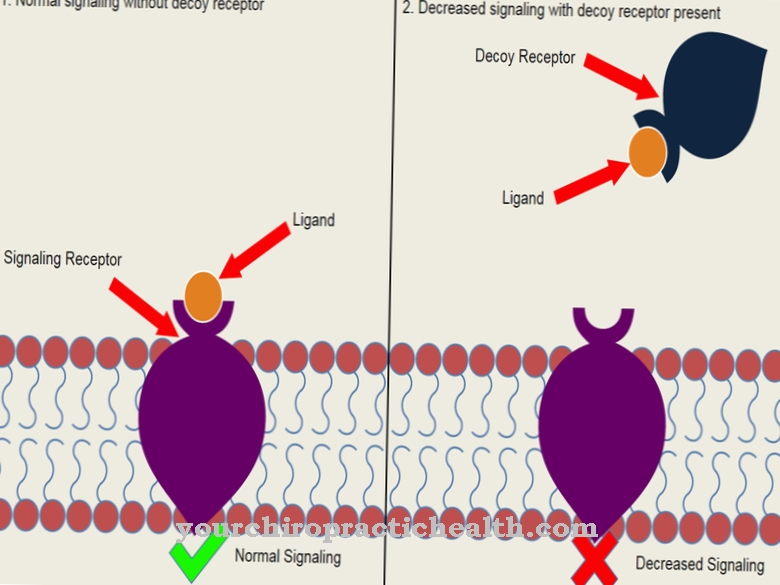As part of the sphenoid bone, the Sella turcica a bony structure at the base of the skull. The pituitary gland, which is connected to the thalamus via the pituitary stalk, sits in the saddle-shaped recess. From here, hormonal processes in the human body are controlled.
What is the Sella turcica?
The term “Sella turcica” is made up of the Latin words for “seat” and “Turkish”. In German, the term “Turk's saddle” is also used synonymously.
The sella turcica is a protruding bone of the sphenoid bone (sphenoid bone) at the inner base of the skull. It divides the middle cranial fossa in the medial plane into a right and a left half.
The name goes back to the Belgian anatomist and professor of anatomy and surgery Adriaan van den Spieghel (1578 - 1625). He compared the indentation of this bone structure with a saddle with a high back, like the ones used by the Turks earlier. The sella turcica is the only structure in the human body that is named after an entire people.
Van den Spieghel first coined the term Turkish saddle in his work "De humani corporis fabrica libri decem", which was published in 1627. A detailed discussion of the name “Sella turcica” can be found with the Austrian anatomist Joseph Hyrtl (1810 - 1894). He deals with these in his works “Onomatologia Anatomica” and “The Arabic and Hebrew in Anatomy”.
Anatomy & structure
Anatomically, the sella turcica is assigned to the sphenoid bone. This skull bone lies frontal to the temporal bone and the occipital bone at the base of the skull. It can be divided into a body (corpus ossis sphenoidalis) and two wings (alae majores and minores) and the pterygoid processes protruding backwards. This bone is the most complex in the human body and is also called a wasp bone because of its shape.
The sella turcica sits on top of the sphenoid bone. The elevations characteristic of the Turkish saddle can be seen on two sides. In front this is the tuberculum sellae (the saddle button) with two lateral cusps, the processus clinoidei anteriores. The back border is formed by the dorsum sellae (the saddle rest) with the processus clinoidei posteriores. Between these two protrusions there is a pit open to the brain, the hypophysial fossa. This is where the pituitary gland (pituitary gland) sits. The sella turcica is spanned by part of the dura mater, the so-called diaphragm sellae. This separates the pituitary gland from the basal parts of the brain and the junction of the optic nerve.
Function & tasks
The sella turcica is a bony structure. This makes it part of the passive musculoskeletal system comprising around 200 bones. As part of the sphenoid bone, the Turkish saddle is an unpaired, irregular bone. Due to their complicated structure, these cannot be assigned to any other bone shape.
The human skull is the result of a long evolution that shaped the body in an efficient manner. As an irregular bone, the sphenoid has a supporting and protective function. It is also involved in the shaping of the skull.
In contrast to most other bones in the human body, the sphenoid does not form the origin or attachment point of one or more muscles. Like every bone, the sphenoid bone contains the medullary and thus has a metabolic function. There are two types of bone marrow: red and white. The task of the red bone marrow is to produce undifferentiated stem cells. It is called blood-forming bone marrow. Erythrocytes, platelets and leukocytes are produced there. The white bone marrow, also known as fat marrow, serves as an energy store.
If there is a great deal of blood loss, white bone marrow is converted to red. This process is known as hematopoiesis. In infants, red bone marrow is found in all the bones of the body, in adults only in the flat and short bones. The sella turcica houses the pituitary gland as part of the sphenoid bone. As an interface between the nervous system and the hormonal balance, metabolism, growth and the function of other endocrine organs are controlled here.
Diseases
The pituitary gland is protected by the bony structure of the sella turcica. Nevertheless, changes in the tissue or diseases can occur at this point.
Tumors in the pituitary gland are often only recognized after years. Those affected suffer from nausea, decreased performance, metabolic disorders or headaches, among other things. In addition, visual field defects can occur if the optic nerve is involved. In this case, an ophthalmological examination of the visual field is necessary in addition to the diagnostic imaging. Most pituitary tumors can be surgically removed through the nose.
If the pituitary gland is not visible in computed or magnetic resonance imaging, there is an empty sella syndrome or empty sella syndrome. The reason for this is usually a protrusion of the meninges into the sella turcica. This protuberance presses the pituitary gland to the edge of the sella, creating the impression of an empty sella in imaging procedures. Another cause can be damage to the pituitary tissue from heart attacks, surgery or radiation. If the person concerned does not show a clinic, no further examinations are necessary.
The Empty Sella Syndrome can manifest itself, among other things, in headaches, constantly runny nose and visual disturbances. More rarely there is an overproduction of the messenger substance prolactin. This leads to a milky discharge from the breast, disorders of the menstrual cycle, erectile dysfunction and infertility. The symptoms can be treated surgically or with medication, depending on the cause.

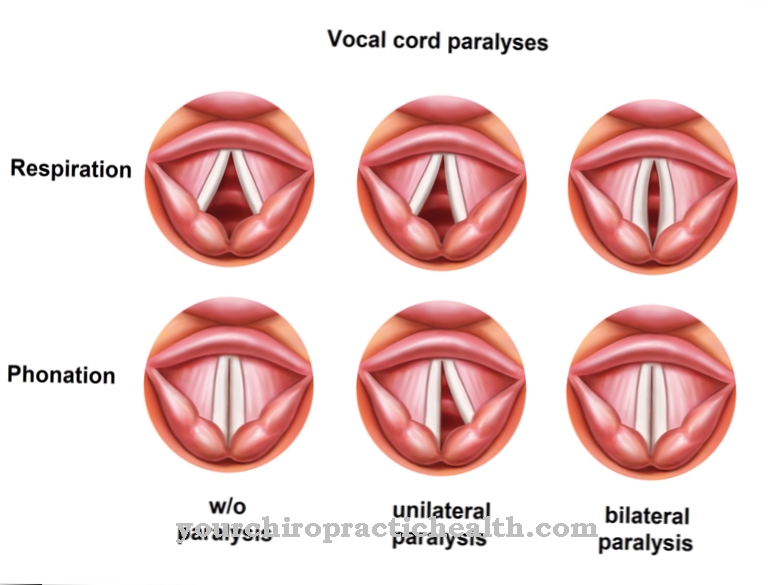

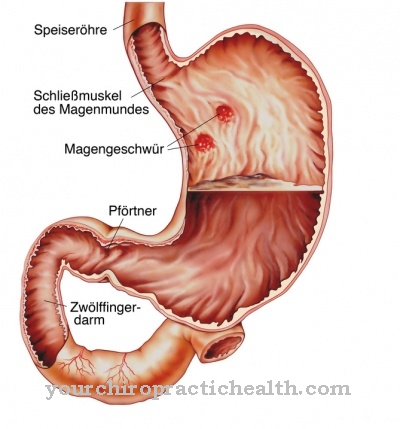

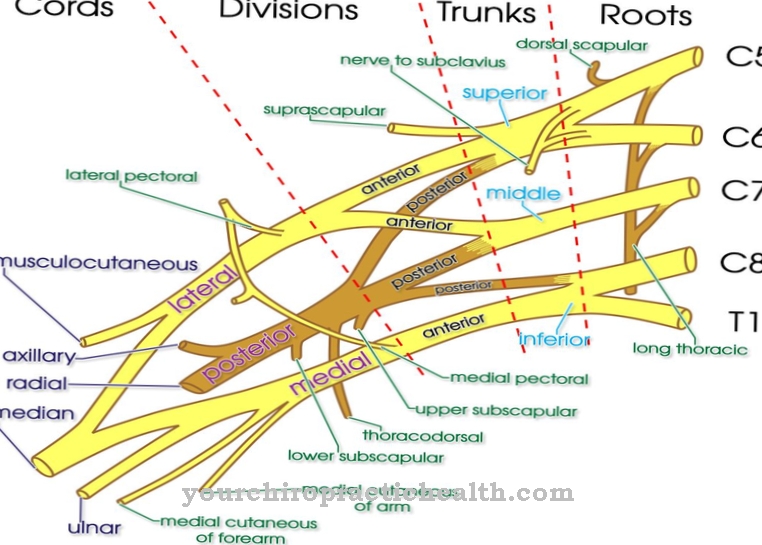



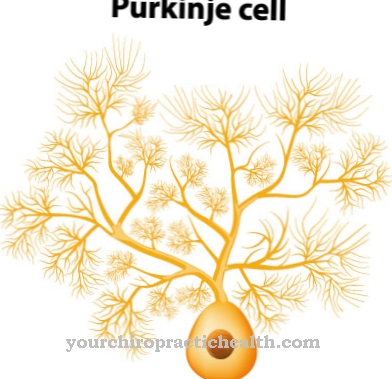


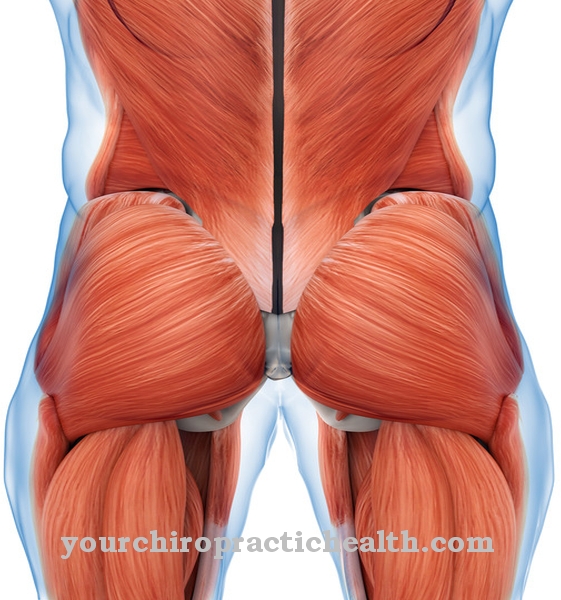
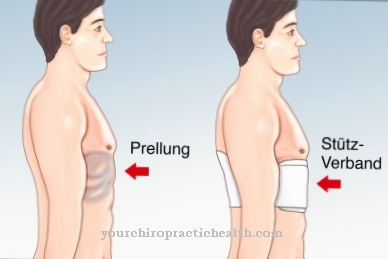



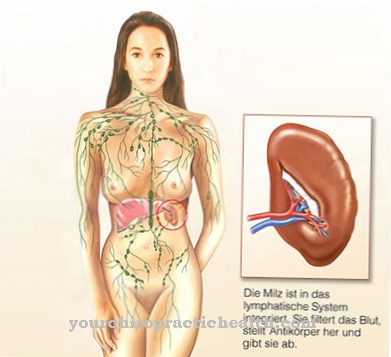

.jpg)


.jpg)


